Excerpts from Jim Conrad's
Naturalist Newsletter
from the January 8, 2012 Newsletter issued from Hacienda Chichen Resort beside Chichén Itzá Ruins; limestone bedrock; elevation ~39m (~128ft), N20.675°, W88.569°; central Yucatán state, MÉXICO
LOOKING AT LICHENS
At www.backyardnature.net/lichens.htm I write that "Lichens are not plants. They are 'composite organisms' made up of two, or maybe three, completely different kinds of organisms. It's as if you combined an animal such as a dog with a plant such as an oak, maybe with a fungus thrown in as well, and ended up with something very different from animal, plant or fungus. Something that was its own thing, with its own identity and manner of being." Lichens are composed of a fungus plus either or both a photosynthesizing alga, or a cyanobacterium -- a kind of photosynthesizing bacterium.
At the above link also I've drawn what a lichen's algal cells with fungal hyphae wrapped around them might look like at a microscopic level.
We have lichens here, though they're not as conspicuous as in rainier places or at higher elevations. They're especially noticeable nowadays because as the dry season advances more and more deciduous trees lose their leaves letting in more light, plus in the dry air the light is so dazzlingly bright that in protected, usually shaded spots where lichens are likely to show up there's more light to see them with.
Traditionally lichens have been divided into just three growth-form types: Crustose (crust- or paint-like), foliose (leafy) and fruticose (branched). Nowadays other lichen types are recognized, such as filamentous (hair-like), leprose (powdery), squamulose (made of scale-like structures) and gelatinous.
One place where they're particularly obvious is on the smooth trunks of dry-season-leafless Frangipani trees, as shown below:
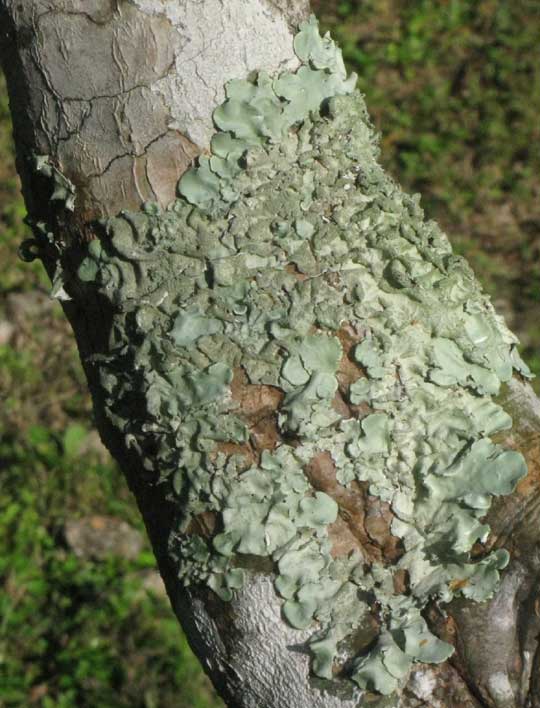
That picture shows a classic foliose species, with flat, thumbnail-size thalli -- "thalli" being the plural for "thallus," which in spore-producing plants refers to the plant body not differentiated into stem and foliage. This looks a lot like Parmatrema tinctorum, commonly found on neotropical garden and roadside trees, but I can't be sure. That species mainly reproduces vegetatively with tiny, sandgrain-like structures called isidia, which simply crumble off the thallus, then produce new lichens where they end up.
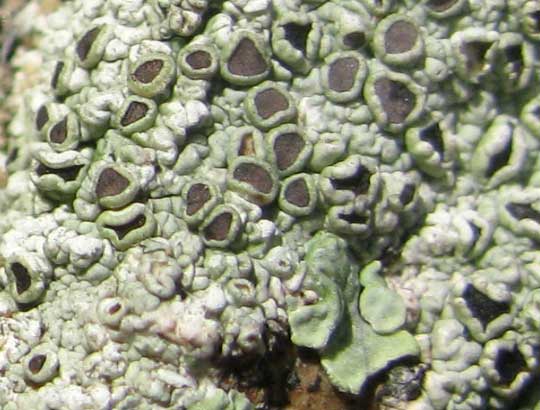
Above you see another foliose species with similar thalli, but this one's fungal component produces little cup-fungus-like fruiting bodies known as apothecia. Fungal spores from the apothecia blow away, fungal hyphae germinate from the spores and grow across a substrate, and if they encounter the right freely growing alga or cyanobacterium cells, the hyphae start growing around the cells, and a new lichen is born.
Mostly in humid tropics over 800 lichen species are known to grow on leaves. Technically leaf-surface-growing lichens are known to be "foliicolous." Many other kinds of organisms also live on leaves, such as mosses, fungi, bacteria, etc., and as a group the various organisms are said to be "epiphylls." The leaf-surface habitat itself is called the "phyllosphere." One of our foliicolous lichens appears below:
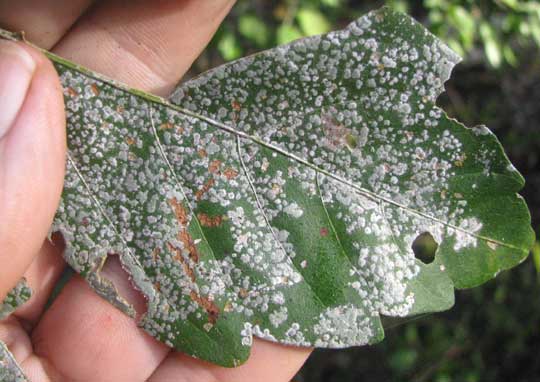
An arty close-up of the above lichen bodies is shown below:
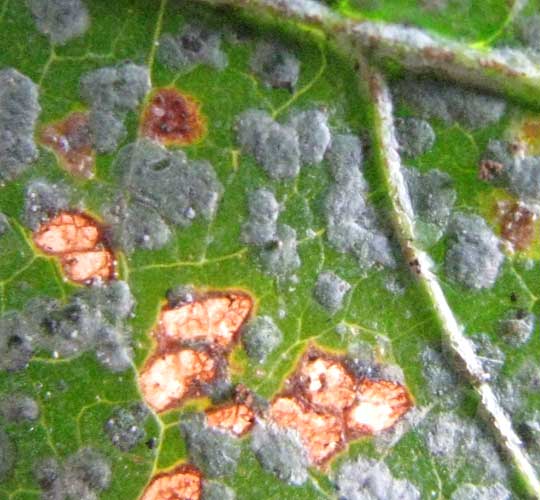
Exploring for lichens here is frustrating because there's no way the amateur can identify them. For example, I'm not even sure that this is a lichen:
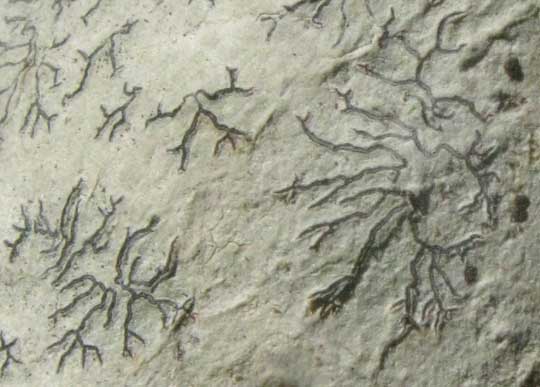
It certainly branches like certain foliose lichens, but they're tiny and their thalli are so slender. And then there are such things as shown below:
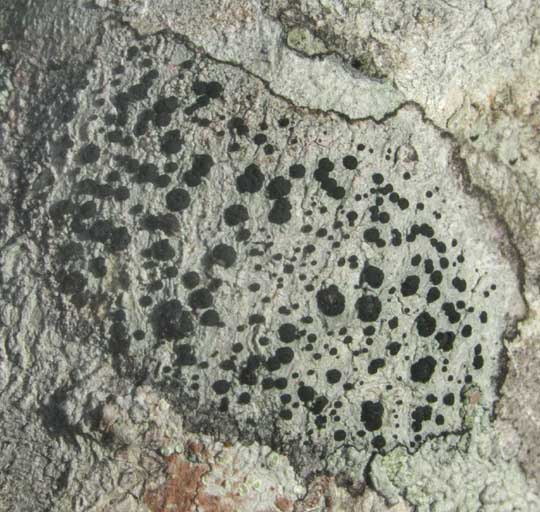
That might even be a slime mold.
One morning this week I spent two solid hours exploring the smooth trunk of a leafless Frangipani tree. It was exhilarating, frustrating, and an awful lot of fun. Folks up North can experience similar moments, even in the winter, and up there field guides can be acquired to help. Check out the Amazon.com ads on my Lichen Page linked to at the beginning.